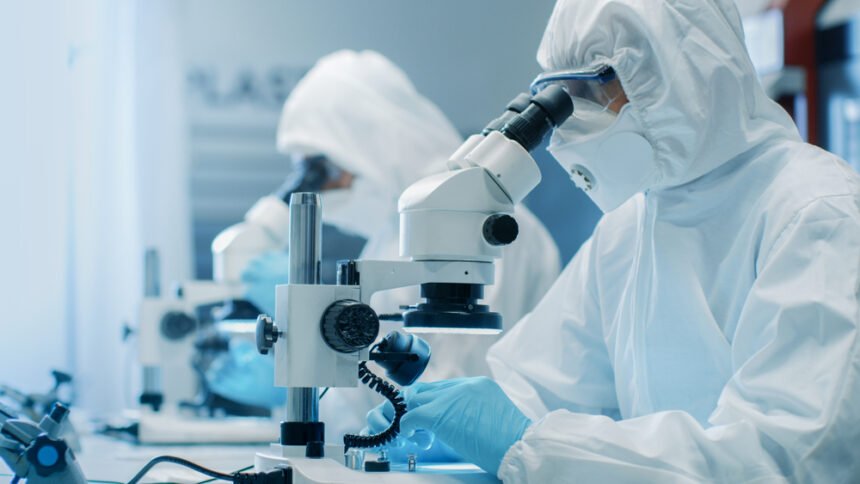The biopharmaceutical industry has experienced significant growth in recent years, with an increasing number of biopharma products being approved for use in various therapeutic areas. The market for pharmaceuticals in the United States alone is projected to reach nearly $862 billion by 2028. Scaling up a biopharma product from the laboratory to commercial production is a complex and challenging process that requires careful planning, execution, and control. This article will provide an overview of the key steps involved in scaling up a biopharma product, including process development, technology transfer, manufacturing, and regulatory considerations.
1. Process Development
The first step in scaling up a biopharma product is to develop a robust and scalable process that can be transferred from the laboratory to a manufacturing facility. This involves optimizing the production process, including cell culture, protein expression, purification, and formulation, to ensure that the product meets the desired quality attributes and can be produced at the required scale. You can also consider outsourcing to boost efficiency.
During process development, it is essential to consider the scalability of the process and the potential challenges that may arise during scale-up. This may involve evaluating different cell lines, expression systems, and culture conditions to identify the most suitable combination for large-scale production. Additionally, it is important to develop a robust purification process that can efficiently separate the product from impurities and contaminants, while maintaining product quality and yield.
Another critical aspect of process development is the formulation of the biopharma product, which involves selecting the appropriate excipients, buffers, and stabilizers to ensure the product remains stable and active during storage and transportation. This may require extensive stability studies and testing to identify the optimal formulation conditions.
2. Technology Transfer
Innovation is crucial for success in the pharmaceutical industry. Unfortunately, it is only useful if you use technology transfer to ensure the technology can be used throughout all stages of the business process.
Once a robust and scalable process has been developed, the next step is to transfer the process from the laboratory to a manufacturing facility. This involves transferring the knowledge, documentation, and materials required to reproduce the process at a larger scale, while ensuring that the product quality and consistency are maintained. You may want to follow the guidelines established by the World Health Organization.
Technology transfer can be a complex and time-consuming process, as it requires close collaboration between the development team and the manufacturing team to ensure that all aspects of the process are understood and can be successfully implemented at the larger scale. This may involve training the manufacturing personnel on the specific techniques and procedures required for the process, as well as providing detailed documentation on the process parameters, equipment, and materials.
One of the key challenges during technology transfer is the potential for scale-up issues to arise, such as changes in product quality, yield, or process performance. To mitigate these risks, it is important to conduct a thorough risk assessment and identify potential scale-up challenges and mitigation strategies. This may involve conducting small-scale pilot studies or engineering runs to evaluate the process performance at the larger scale and identify any necessary process adjustments.
3. Manufacturing
Once the technology transfer has been completed, the next step is to begin manufacturing the biopharma product at the larger scale. This involves setting up the manufacturing facility, including the installation and qualification of the equipment, utilities, and systems required for the process.
A critical aspect of manufacturing is ensuring that the process is performed under controlled conditions, following Good Manufacturing Practices (GMP) guidelines. This includes maintaining a clean and controlled environment, using qualified equipment and materials, and following validated procedures and documentation.
One of the key challenges during manufacturing is ensuring that the product quality and consistency are maintained throughout the production process. This requires implementing a robust quality control system, including in-process testing, sampling, and monitoring to ensure that the process is operating within the specified parameters and that the product meets the required quality attributes.
An essential part of the manufacturing process is the sterile fill and finish, which involves filling the final product into vials or other containers and sealing them under aseptic conditions. This step is critical to ensure that the product remains sterile and free from contamination during storage and transportation. To achieve this, the fill and finish process must be performed in a controlled environment, using qualified equipment and personnel trained in aseptic techniques.
4. Regulatory Considerations
Scaling up a biopharma product also involves navigating the complex regulatory landscape, including obtaining the necessary approvals and licenses from regulatory authorities. This may involve submitting a Biologics License Application (BLA) or Marketing Authorization Application (MAA) to the relevant regulatory agencies, providing detailed information on the product, the manufacturing process, and the quality control systems in place.
Regulatory authorities may also require additional information, such as clinical trial data, to demonstrate the safety and efficacy of the product. This may involve conducting Phase I, II, and III clinical trials to evaluate the product’s safety, tolerability, and effectiveness in the target patient population.
In addition to obtaining regulatory approvals, it is essential to maintain compliance with the relevant regulations and guidelines throughout the product lifecycle. This includes adhering to GMP guidelines, conducting regular audits and inspections, and implementing a robust quality management system to ensure that the product quality and safety are maintained.
In conclusion, scaling up a biopharma product is a complex and challenging process that requires careful planning and execution.

